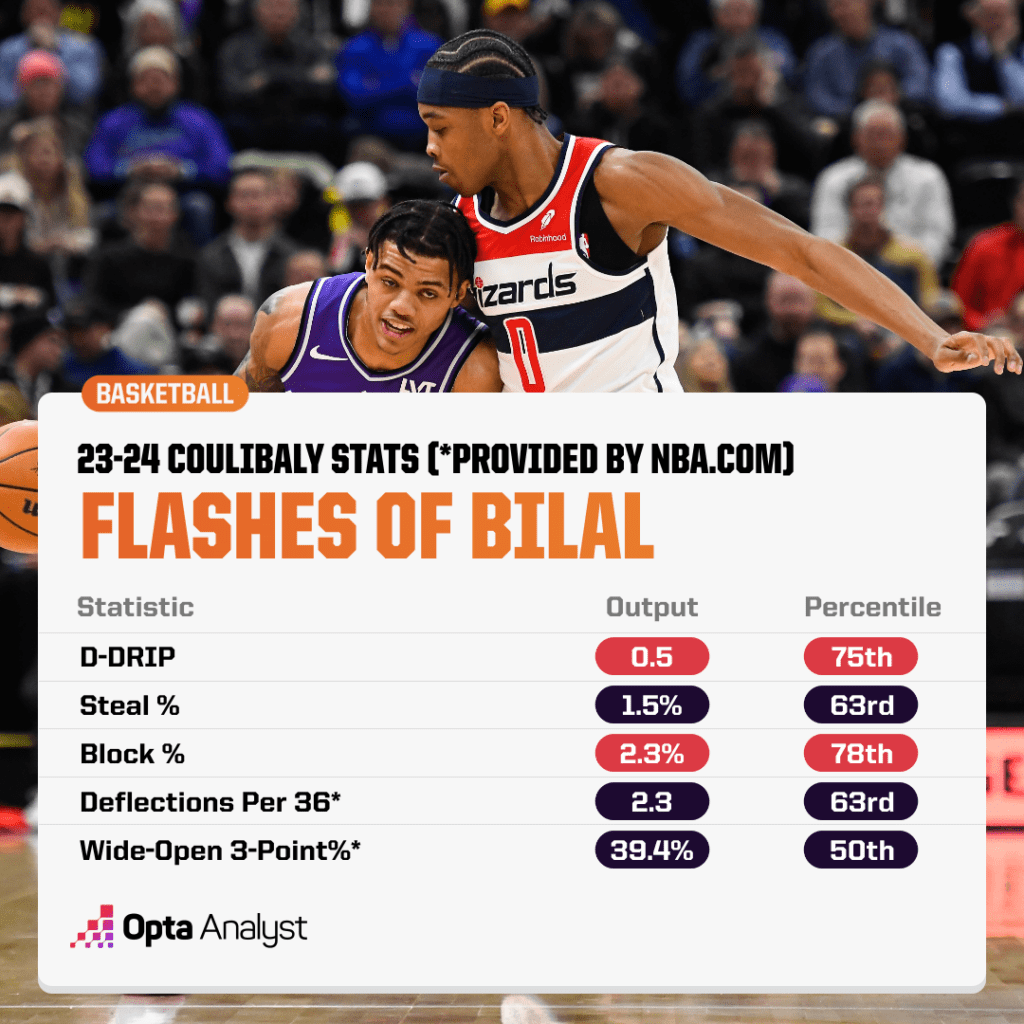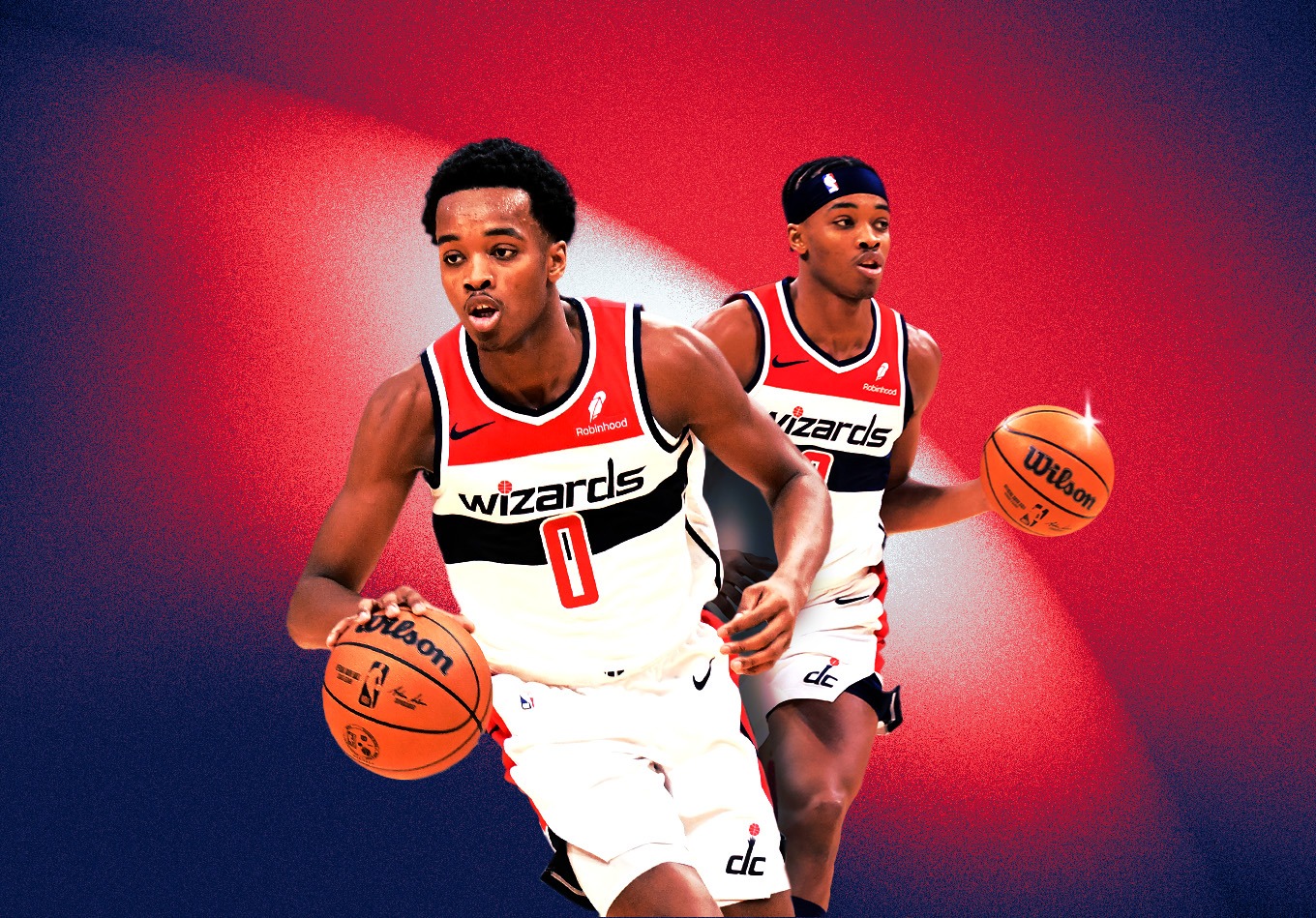When the Washington Wizards traded away Bradley Beal and Kristaps Porzingis this offseason, they made it known to the general public that the old guard was out and a new regime was incoming.
Washington began this new era by selecting Victor Wembanyama’s teammate on Metropolitans 92, Bilal Coulibaly, in the 2023 NBA Draft. But other than Wembanyama’s autograph, what can Coulibaly bring to Washington?
What are his strengths? What are his weaknesses? And how excited should the Wizards be about Coulibaly’s long-term prospects?
We’re going to attempt to answer those questions and more.
The Good
Coulibaly has what every raw wing/forward who gets selected in the top 10 has – tools. He’s got good height (6-foot-7) and even better length (7-2 wingspan). But what really pops off the screen is his gait.
For those who don’t know, the term “gait” is often thrown around in the medical field to describe a person’s manner of walking. Gait can be trained, but for the most part, it is largely biological.
Some players have poor gait (at least for playing basketball). Their steps are clunky and laborious. Coulibaly is not one of those individuals. His movement patterns appear carefree and fluid. When you watch him, it looks like he’s skipping on clouds rather than sprinting down hardwood flooring.
In these next couple of clips, while also admiring his impressive length, I want you to focus in on his lower body. Look how seamlessly he executes changes in direction and side-to-side movements.
His size and the ease with which he moves is a rare, damaging combination. In a lot of ways, it’s akin to the gait of Jaden McDaniels – an elite defensive wing who ranks in the 90th percentile in defensive DRIP and has is similar statistically.
Coulibaly’s anatomy also lends itself to defensive playmaking and help side rim protection. He isn’t the event-creating tornado that his colleague Ausar Thompson is, but Coulibaly is still in the 63rd percentile in steal rate and the 78th percentile in block rate.

Unlike Thompson, though, Coulibaly is converting on his wide-open triples at a respectable clip. According to NBA.com, his 39.4% conversion rate on wide-open 3s is in the 50th percentile among players with at least 50 wide-open 3-point attempts.
As a general rule, when you are evaluating young players, you need to focus more on what they flash than their overall production (because young players are inherently inconsistent). And that theory best summarizes the rest of Coulibaly’s offensive game.
When he’s not spotting up in the corner, he’s making timely cuts (first clip in the montage below) or attacking off the catch (second clip).
The Bad
While Coulibaly has flashes of brilliance on offense, the numbers aren’t nearly as intriguing. You may be able to put together a nice highlight montage of Coulibaly attacking closeouts, but by the numbers, he’s only in the 17th percentile in true shooting percentage on drives.
Coulibaly is also in the 11th percentile in turnover percentage despite only being in the 11th percentile in usage. This not only hinders his ability to get downhill on second-side drives but also limits his upside as an on-ball creator (you need to have strong control of the basketball to orchestrate a high volume of pick-and-rolls).
There are also concerns about his utility as a true floor spacer. Yes, his wide-open 3-point percentage is solid. But to be a good spacer, you need to be efficient on high volume with a quick release. Coulibaly is only attempting 3.8 3s per 75 possessions, which is only in the 28th percentile.
The reason his volume is so low is that his shooting motion isn’t nearly as swift as his lateral agility. He has a slow wind-up that includes a major dip in his shot. Look how long it takes him to launch the 3-pointer in the clip below, and then contrast it with his sharpshooting classmate Gradey Dick:
On top of that, despite Coulibaly having a good wide-open 3-point percentage this season, he doesn’t necessarily have a great reputation as a shooter. He’s only a 70.6% free-throw shooter (22nd percentile), which is a great context-independent way of measuring a player’s shooting proficiency. And when you factor in all his shooting data over the last two years, Coulibaly is only a 22.6% 3-point shooter in a larger sample size (406 attempts).
Now, if you read our analysis on Thompson (if you haven’t, you should), you would know that you can overcome being a below-average shooter by being supremely physical.
Unfortunately, it seems less likely that Coulibaly can follow this pathway than it does for Thompson. As it stands, Coulibaly is only in the 44th percentile in offensive rebounding percentage and the 45th percentile in contested rebounding. Meanwhile, Thompson is currently in the 78th and 69th percentile in those categories, respectively.
Yes, Coulibaly is young (just 19) and still growing into his body. But part of what makes him such a great mover on defense is the frailness of his frame. And it is uncertain how much weight he can pack on (to improve his ability to play physically) without losing his special gift.
The Bottom Line
Like Thompson, Coulibaly falls under the illustrious below-average shooting wing/forward with incredible defensive tools archetype – arguably the toughest type of player to evaluate.
McDaniels, the player we compared Coulibaly to earlier, figured the shooting part out. He was a 39.8% 3-point shooter last season, and he got paid handsomely in the offseason because of it (indicating his immense value as a role player).
Coulibaly has a better chance of becoming an above-average shooter than Thompson does. So, you could say that Coulibaly’s ceiling as a two-way role player is higher.
But given Coulibaly’s limitations as a driver, ball handler, and physical force, his chances of finding a way to exist offensively without a jumper are bleaker than Thompson’s odds, meaning that the twin boasts the higher floor of the two.
A high ceiling and a low floor – that’s usually what you get with raw prospects selected in Coulibaly’s draft range. For the Wizards, that’s a scary bet to make for a franchise that is trying to reinvent themselves.
But the upside may be worth it because if the Coulibaly gamble hits, Washington will have a top-shelf role player to flank their next generation of stars.
Check out our MLB, NBA and NFL coverage, as well as our college basketball picks. Follow us on X and Instagram for more!
